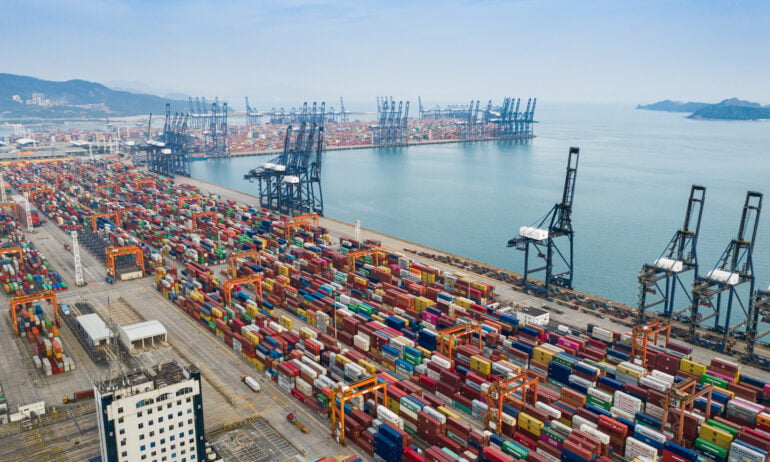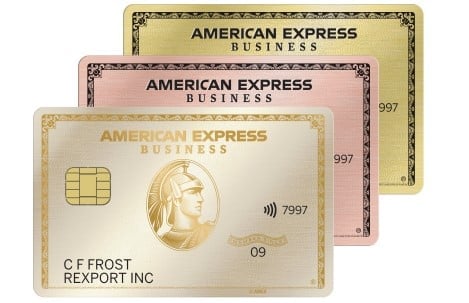How Will Trump’s Tariffs Impact Small Businesses?
The Trump administration's sweeping tariffs mean that small businesses may have to pay more for their overseas products and parts.

Many, or all, of the products featured on this page are from our advertising partners who compensate us when you take certain actions on our website or click to take an action on their website. However, this does not influence our evaluations. Our opinions are our own. Here is a list of our partners and here's how we make money.
Update: On May 14, the U.S. will lower its tariff on Chinese imports from 145% to 30%. China will reduce its 125% tariff on American goods to 10%. This agreement will last for 90 days.
Previously, on April 9, a 90-day pause on President Trump's “reciprocal” tariffs on most U.S. trading partners (besides China) went into effect. A 10% baseline tariff on those trading partners remains in place.
Key takeaways
Tariffs are paid for by U.S. companies that import the affected goods and materials, meaning small businesses may have to pay more for their imports.
When the U.S. imposes tariffs on other countries, those countries often retaliate with their own counter tariffs on U.S. exports. This can hurt small businesses that export their products.
To combat the impact of tariffs, small-business owners can streamline their operations, communicate with customers, reevaluate their supply chains and seek professional advice.
President Trump has followed through on his campaign promise of enacting widespread and far-reaching tariffs. Many economists believe that these tariffs could lead to an increase in prices, which means small businesses may have to pay more for goods and services.
A tariff is a tax levied on imported goods when they enter the country. When the U.S. government imposes tariffs, they’re paid by the domestic companies that import the affected goods or materials. To cover the higher import costs, domestic companies typically raise prices — which then impacts the consumer.
In President Trump’s first term, he levied several rounds of tariffs on steel, aluminum, washing machines, solar panels and goods from China. President Biden kept the majority of these in place. Although economists have said these tariffs only had a modest impact on the economy (mostly in those specific affected industries), many are concerned that these new larger tariffs could have further-reaching effects.
Here’s what small business owners need to know.
How much do you need?
We’ll start with a brief questionnaire to better understand the unique needs of your business.
Once we uncover your personalized matches, our team will consult you on the process moving forward.
4 ways tariffs may impact small businesses
1. Increased cost of goods
Tariffs can make it more expensive for small businesses to purchase imported goods and materials. These increased costs can strain cash flow and lead to a decrease in profit margins.
2. Price increases for customers
To cover the higher cost of goods, small businesses may need to increase their prices. This can impact customer loyalty and relationships — as customers may turn to larger companies or competitors that offer lower prices.
3. Supply chain disruptions
Tariffs can disrupt the global supply chain, making it more difficult for small businesses or their suppliers to get the goods they need. As a result, you may not be able to fill customer orders, which can lead to a loss of revenue and customer trust.
4. Trade issues for businesses that export goods
When the U.S. imposes tariffs on other countries, those countries often respond by enacting their own tariffs on U.S. exports. In response to the Trump Administration's latest tariffs, Canada has imposed a 25% counter tariff on select U.S. products, but hasn't specified which items will be impacted. Mexico is also anticipated to announce a retaliatory tariff.
China's finance ministry has announced 15% counter tariffs on imports of chicken, wheat, corn and cotton from the U.S., as well as 10% tariffs on imports of sorghum, soybeans, pork, beef, aquatic products, fruits, vegetables and dairy products. The higher cost of U.S. exports can discourage suppliers and consumers from purchasing from U.S. companies.

Tips to mitigate the impact of tariffs on small businesses
Here are actions that small businesses can take to try to mitigate the potential impact of tariffs on their operations:
Communicate with your customers. If you have to raise prices to combat the higher cost of goods, be upfront with your customers and explain why the change is occurring. You can emphasize the quality, uniqueness or other differentiating features of your products to help justify increasing prices and thank customers for their loyalty.
Reevaluate your supply chain. If possible, determine if you can purchase your goods or materials from other suppliers. Look for suppliers in countries that aren’t receiving tariffs — or see if you can work with a local goods provider. If you can’t diversify your supply chain, try to negotiate with your suppliers on prices or contracts. They may be able to offer you a discount for ordering a certain number of products, for example. » MORE: How small businesses can combat supply chain risks amid Trump's tariff war
Streamline operations. Review your current operations and identify any areas where efficiency can be improved. Look for opportunities to streamline processes and cut costs. Saving on overhead costs may lessen the impact of increased prices on goods and services.
Seek professional assistance. Financial advisors or accountants can help you create a personalized plan to combat potential tariff effects. Business mentors from an organization like SCORE or your local Small Business Development Center can also offer free or low-cost advice.
Consider taking out a business line of credit. A business line of credit can serve as an emergency fund — allowing you to draw funds as needed and only pay interest on the money you borrow. If you experience cash flow interruptions or an increase in costs as a result of tariffs, a business line of credit can be a helpful tool. Plus, with the recent Federal Reserve interest rate cuts, rates may be lower than they have been previously.
How much do you need?
We’ll start with a brief questionnaire to better understand the unique needs of your business.
Once we uncover your personalized matches, our team will consult you on the process moving forward.


